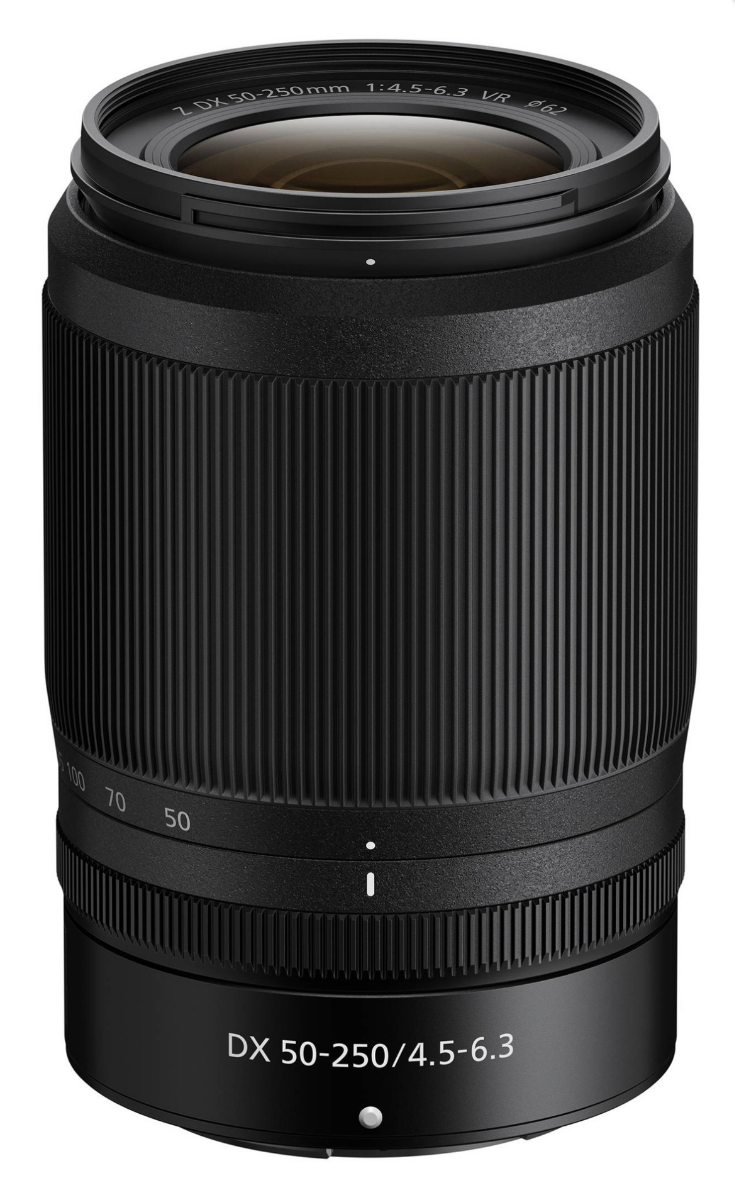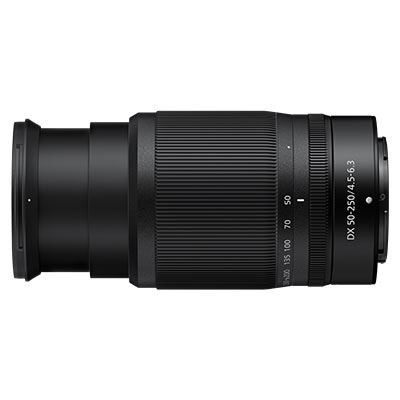Product Description
Nikon NIKKOR Z DX 50–250mm f4.5–6.3 VR Lens
- Extremely-portable (405g) fast-focus compact telephoto zoom lens
- Silent control ring for MF, aperture control and exposure compensation
- 7 rounded diaphragm opening
- Automatic electromagnetic aperture control
- 16 elements in 12 groups including 1 ED glass element
- Optimised for outstanding light-gathering capability
- Minimum focusing distance of 0.5m
- The lens comes with the LC-62B 62mm Snap-On Front Lens cap
Frame unique portraits. Capture distant action. With a maximum focal length of 250 mm, this fast-focusing 5x zoom lens offers more reach than most. Perfect for travel, it’s a great all-round performer that delivers beautifully sharp photos and movies.
The NIKKOR Z DX 50–250mm f4.5–6.3 VR is one of the first two, extremely-portable NIKKOR Z DX zoom lenses capable of quick focus that is quiet and steady, ideal for video and still imagery. This particular lens is a fast-focusing compact telephoto zoom lens that allows the user to switch from framing one-of-a-kind portraits to recording far away action, all with extremely smooth and steady precision. It offers a normal to telephoto (50-250mm) focal range and a minimum focusing distance of only 0.5m ensuring crisp images during close-ups. Other noteworthy features include in-lens vibration reduction and the silent control ring.
In-Lens Vibration Reduction
The in-lens vibration reduction ensures that images come out looking their best even if the user is shooting without a tripod or in low lit conditions. Video remains shake-free even if it has been recorded whilst walking, perfect for vlogging. Blur reduction is also available when the user does want to shoot with a tripod. It facilitates shooting at shutter speeds at 5 stops slower than previously possible.
For full specifications click Here

























